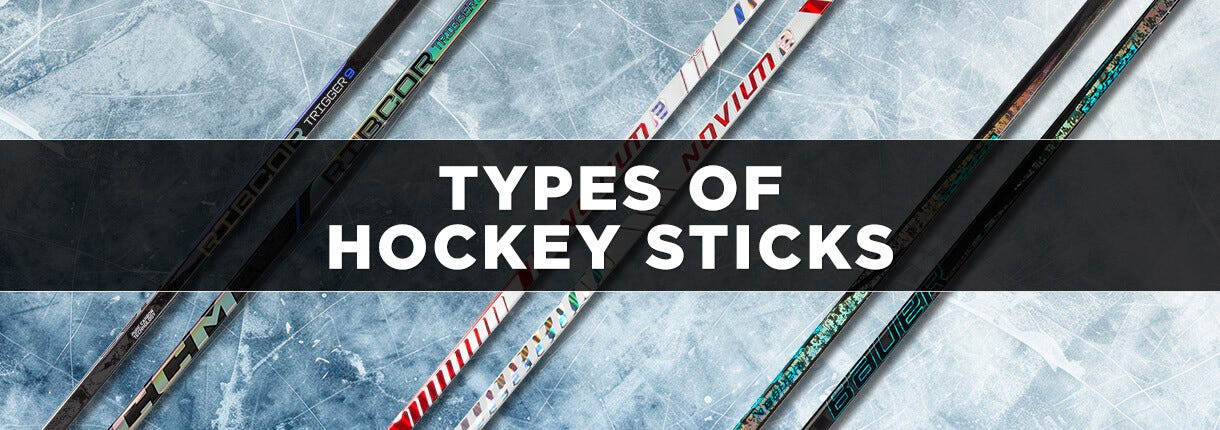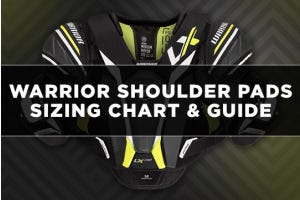Types of Hockey Sticks: Which Type is Best for You?

In this article, we will disucss:
Choosing the Best Type of Hockey Stick for You
Selecting the right hockey stick is key to improving your performance on the ice. Whether you're a beginner or a seasoned player, the right stick can enhance your shooting, passing, and overall gameplay. At HockeyMonkey, we help you find the perfect stick that suits your playing style, from lightweight composite models to traditional wood sticks. With our expertise, you'll discover a stick that boosts your confidence and performance, making a noticeable difference in your game.
Overview of Different Types of Hockey Sticks
Hockey sticks come in various types, each with unique characteristics. The main types are wood and composite sticks. Understanding these differences will help you choose the best stick for your game.
Composite Hockey Sticks
Composite sticks dominate today's game, made from advanced materials like carbon fiber, fiberglass, and sometimes Kevlar for strength, durability, and lightweight performance. These sticks offer enhanced shot power, flex, and precision, making them ideal for all levels of play.
| Composite Hockey Sticks | |
|---|---|
| Advantages |
|
| Disadvantages |
|
| Best Use Cases |
|
Wood Hockey Sticks (Rarely Used)
Wood sticks are now mostly obsolete in modern hockey but can still be found in some recreational settings or for training purposes. They are made from laminated wood, often reinforced with fiberglass for durability.
| Wood Hockey Sticks | |
|---|---|
| Advantages |
|
| Disadvantages |
|
| Best Use Cases |
|
Factors to Consider When Buying a Hockey Stick
When choosing a hockey stick, consider the following factors:
- Player's Age: Ensure the stick matches the player's age and size for proper handling.
- Level of Play: Beginners might prefer wood for its durability, while advanced players may opt for composite for performance.
- Position: Forwards might prefer lighter sticks for quick shots, while defensemen may choose stronger, more durable sticks.
- Playing Style: Your style (e.g., power vs. finesse) will influence the type of stick that best suits your needs.
Caring for Your Hockey Stick


Proper care extends the life of your hockey stick, regardless of type:
- Clean Regularly: Wipe down your stick after games to remove moisture and debris.
- Inspect for Damage: Check for cracks or chips and address them immediately.
- Store Properly: Keep your stick in a dry, cool place to avoid warping.
- Tape Maintenance: Regularly change the tape on the blade and handle for optimal grip and protection.
Types of Hockey Sticks - Frequently Asked Questions
What type of hockey stick should I buy as a beginner?
As a beginner, a wood hockey stick or a lower-end composite stick is a great option due to its durability and affordability. It provides excellent puck feel, which helps in developing fundamental skills.
How can I tell if a hockey stick is the right fit for me?
A hockey stick is the right fit if it reaches between your chin and nose when standing on skates. Additionally, the flex rating should match your strength and playing style.
Can I use the same hockey stick for ice and street hockey?
While you can use the same stick for both, it's recommended to have separate sticks for each. Ice hockey sticks can wear down quickly on rough street surfaces, reducing their lifespan.
How often should I replace my hockey stick?
Replace your hockey stick when it shows signs of significant wear, such as cracks or a loss of stiffness. For frequent players, this might be a couple times a season, while occasional players might find their sticks last longer.









Login and Registration Form
or
Create an account